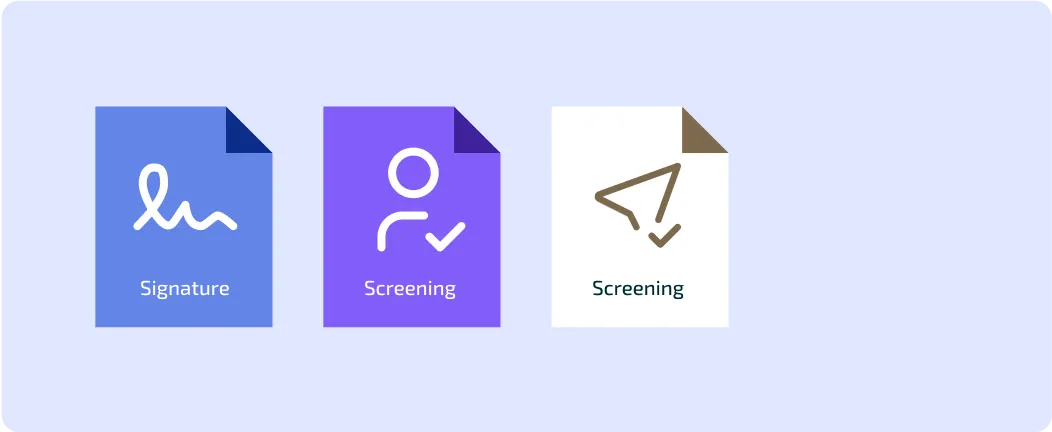.webp)
Published on
June 24, 2025
Key Elements of a Strong AML Compliance Program Explained
.png)
Accelerate AML Compliance: Meet Regulatory Demands with 80% Less Setup Time
.svg)
.svg)
A Compliance Program is a set of policies, procedures, and controls that a business or financial institution follows to ensure it complies with Anti-Money Laundering (AML) laws and prevents financial crimes like money laundering and fraud. It helps detect and report suspicious activities while protecting the organization from legal and reputational risks.
Key Parts of a Compliance Program:
- Clear Policies and Procedures: Guidelines for following AML regulations.
- Risk Assessment: Identifying and managing financial crime risks.
- Customer Due Diligence (CDD): Verifying customer identities and monitoring transactions.
- Transaction Monitoring: Detecting unusual or suspicious financial activities.
- Suspicious Activity Reporting (SARs): Reporting suspicious transactions to authorities.
- Employee Training: Teaching staff how to identify and report financial crimes.
- Regular Audits and Reviews: Checking if the compliance program is effective and up to date.
A well-structured Compliance Program helps prevent illegal activities and ensures businesses meet legal requirements.
Example:
XYZ Bank has a strong Compliance Program to prevent money laundering.
- New Customer Review:
- A client, Mr. John, applies for a business account for his company, John Imports Ltd.
- The bank verifies his identity and business details through Customer Due Diligence (CDD).
- Since import-export businesses can be used for money laundering, the bank marks this as a moderate risk account and applies enhanced monitoring.
- Suspicious Transactions Detected:
- After a few months, John Imports Ltd. starts receiving large wire transfers from multiple foreign companies in high-risk countries.
- The bank’s transaction monitoring system flags these as unusual.
- A compliance officer reviews the case and finds no clear business reason for the transactions.
- Investigation and Reporting:
- The bank asks Mr. John for more details, but he cannot provide proper documentation.
- The compliance team files a Suspicious Activity Report (SAR) with the authorities.
- Investigators later discover that the company was being used to launder money for an international criminal group.
Key Takeaways:
- A Compliance Program helps detect and prevent financial crimes.
- Customer Due Diligence (CDD) and transaction monitoring are key to identifying suspicious activities.
- Suspicious Activity Reports (SARs) allow authorities to investigate and take action.
- Regular audits and updates keep compliance programs effective.
Streamline Compliance: Achieve 80% Faster Setup for Fraud Prevention
.svg)
.svg)

How Aseel reduced onboarding time by more than 87% using FOCAL
Learn how FOCAL empowered Aseel to achieve new milestones.


Mastering Fraud Prevention: A Comprehensive Guide for KSA and MENA Businesses
51% of organizations fell victim to fraud in the last two years, don't be caught off guard, act proactively.


Featured blog posts

.png)
Key Elements of a Strong AML Compliance Program Explained
Learn how a strong Compliance Program prevents financial crimes by using CDD, transaction monitoring, SARs, and audits to ensure AML law compliance.
.webp)
.png)
Key Elements of a Strong AML Compliance Program Explained
Learn how a strong Compliance Program prevents financial crimes by using CDD, transaction monitoring, SARs, and audits to ensure AML law compliance.
.webp)
.png)
Key Elements of a Strong AML Compliance Program Explained
Learn how a strong Compliance Program prevents financial crimes by using CDD, transaction monitoring, SARs, and audits to ensure AML law compliance.
.webp)





AI-Driven Precision in Fraud Risk and AML Compliance



.svg)
.png)





.svg)

_FastestImplementation_Small-Business_GoLiveTime.png)

_HighPerformer_Small-Business_HighPerformer.png)
_Leader_Leader.png)



%20(1).webp)